Estimated reading time 10 minutes, 16 seconds.
In May, Bombardier Business Aircraft (BBA) upstaged its major competitors at the annual European Business Aviation Convention & Exhibition (EBACE) in Switzerland when it revealed it had been secretly flying a new member of the Global corporate jet family, powered by a brand new turbofan engine.
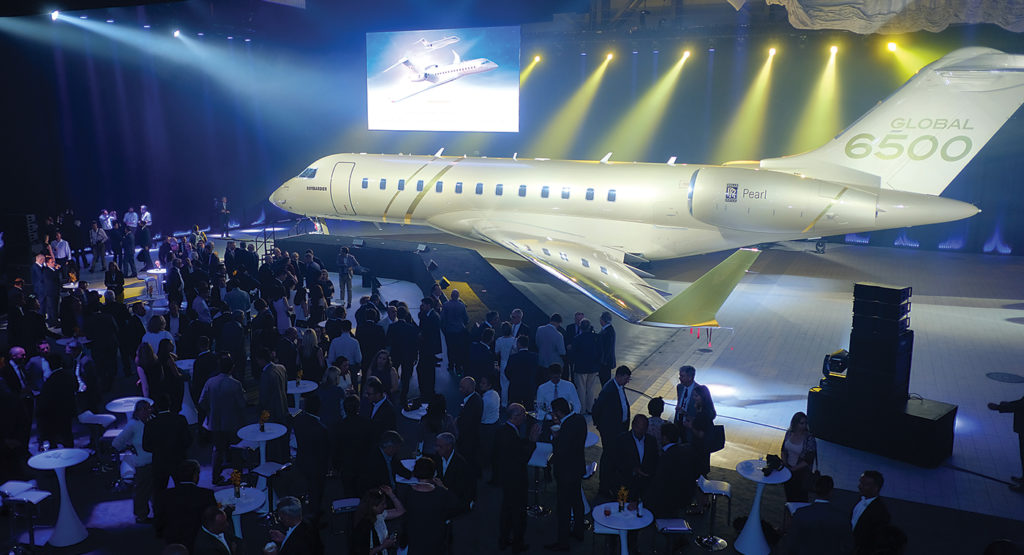
One day prior to the opening of EBACE, industry and media guests were attending a Bombardier reception in the Tag aviation hangar when BBA president David Coleal surprised the audience by dropping a curtain to reveal a luxurious bronze-painted Global 6500 flight test vehicle (FTV1). The shiny jet is powered by a pair of brand new 15,125-pound-thrust Rolls-Royce Pearl 15 turbofans tucked into the nacelles.
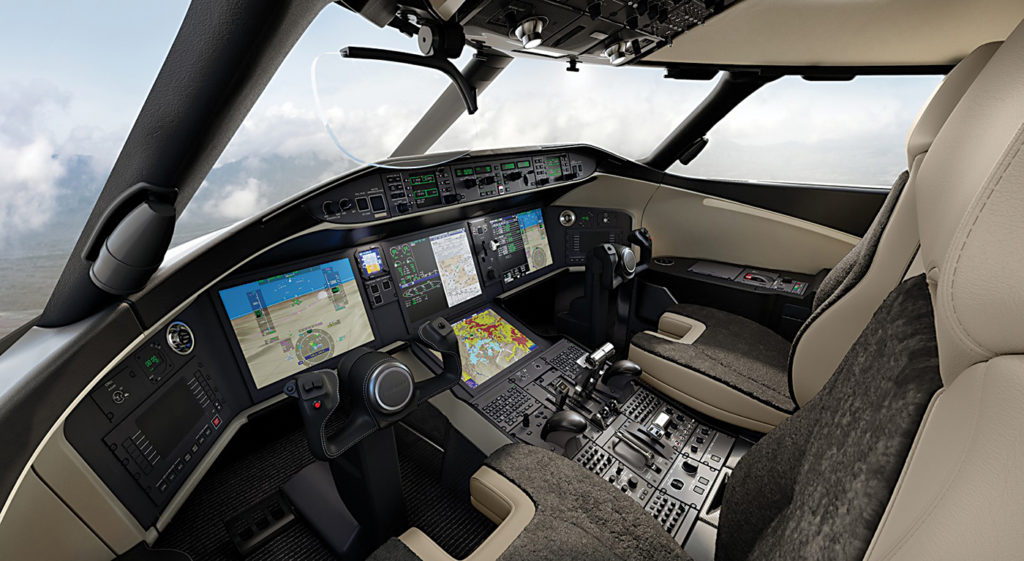
The well-executed staging signalled BBA’s strength in the business aviation market and re-established Rolls-Royce as a next generation business aircraft engine provider.
FTV1 only appeared in the pre-show unveiling and flew back to Wichita, Kan., immediately afterwards.
“The Global 5500 and Global 6500 aircraft have the longest range, the largest cabins and the smoothest ride in their class, and we are very proud that they will be powered by the advanced and efficient Pearl engine, purpose-built for these aircraft by our longstanding partners at Rolls-Royce,” said Coleal.
Despite delivering up to nine per cent more thrust during takeoff than the Rolls-Royce BR700 used on the Global 5000 and Global 6000, the Pearl engine will be two decibels quieter and operators will benefit from a seven per cent improvement in specific fuel consumption (SFC).
The engine will also deliver world-leading emissions performance, including best in class nitrogen oxide (NOx) emissions, despite propelling customers at speeds approaching the speed of sound (Mach 0.90).
“The combination of outstanding performance, economy, and reliability levels make it the perfect fit for Bombardier’s newest Global aircraft,” said Chris Cholerton, president, Civil Aerospace, Rolls-Royce. “With the Pearl engine, we are extending our successful relationship with Bombardier, which started more than 20 years ago. Together, we made history by creating a whole new class of aircraft and that success story enters a new chapter today.”
The list prices for the Global 5500 and Global 6500 are lower than those for the Global 5000 and Global 6000, which is aligned with industry pricing practices for new aircraft, said Bombardier.
“Ultimately, the market will decide the price, but we expect the Global 5500 and Global 6500 aircraft to fetch a premium price versus the Global 5000 and Global 6000,” Mark Masluch, BBA’s director of communications and public affairs, told Skies.
Bombardier has delivered its 800th Global aircraft to a customer, and HK Bellawings Jet Limited in Hong Kong has signed a letter of intent (LOI) for up to 18 Global 6500 and Global 7500 business jets.
The first Global 5500 and Global 6500 aircraft will enter service in late 2019, following certification.
Global Family
In 1999, the first Bombardier Global Express long-range business jets entered service, powered by a pair of 14,750-pound-thrust BMW Rolls-Royce BR710-A2-20 turbofans.
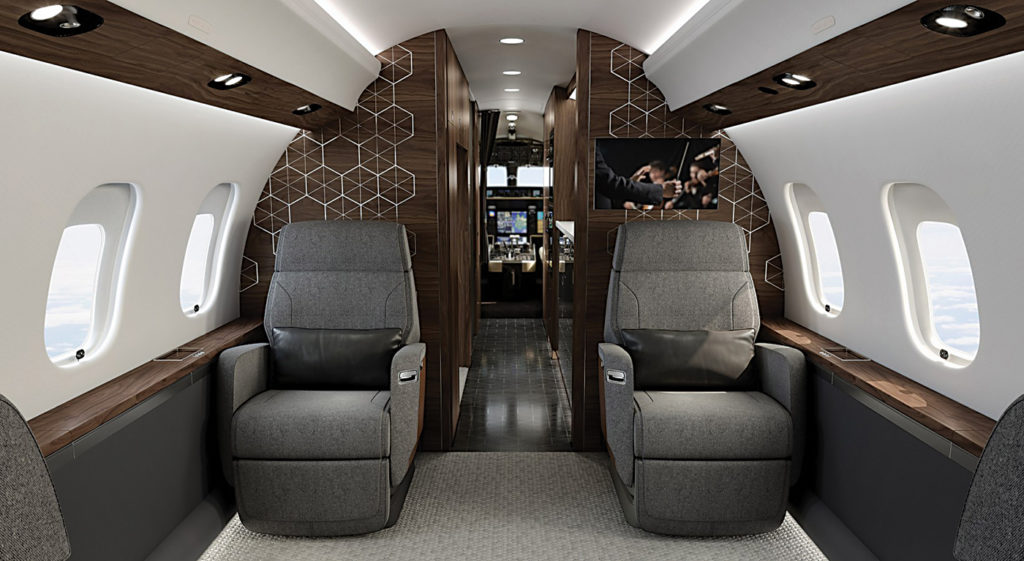
The new jets were assembled in Toronto and completed at Bombardier in Montreal and other independent companies, until Bombardier brought most of the completion work in-house.
In 2005, Bombardier launched the lower priced Global 5000, a three-zone cabin 4,800 nautical mile version of the airplane, and an improved Global Express XRS (replacing the Global Express) offering greater range and performance and new cabin and cockpit upgrades, including the Bombardier Enhanced Vision System (BEVS) as standard equipment.
The most notable engineering change was the addition of a new fuel tank in the wing root to provide more range–6,150 nautical miles (11,400 km) at a cruise speed of Mach 0.85, and 5,450 nautical miles (10,100 km) at Mach 0.87.
The engineers working on the Bombardier Vision flight deck described the avionics change as a very significant upgrade that gave the aircraft “a new brain.” This was also the first aircraft with synthetic vision on a head-up display (HUD).
The Global Express XRS rebranded as the Global 6000 in 2012, which coincided with the introduction of the Rockwell Collins Pro Line Fusion-based Vision flight deck on both the Global 5000 and Global 6000 aircraft. In addition to a brand new flight deck, the Global 5000’s range also increased to 5,200 nautical miles.
With the introduction of the Global 6000, the numerical designation of the Global family now represented the maximum range in nautical miles of each family member (at 0.85 M with NBAA reserves).
Market Demand
In 2016, Bombardier Business Aircraft forecasted 8,300 new business jet deliveries between 2016 and 2025, valued at US$250 billion.

The same year, market research firm Forecast International published a study on Bombardier that predicted the Canadian company would deliver 1,470 Global business jets between 2016 and 2026.
The study said 85 per cent of demand will centre on current production models of the Global 5000 and 6000, while the remainder will be focused on the ultra-long-range and higher-priced Global 7000, which will enter service in late 2018.
Back to Rolls-Royce
It’s a maxim in the aircraft industry that a new generation aircraft needs a new engine, but engine development takes longer.
Rolls-Royce once owned the top end of the business jet engine market with the Spey, Tay, BR710, BR725 and AE3007 engine families.
Then, Bombardier selected the GE Passport to power the Global 7500 and Global 8000, and Gulfstream selected the Pratt & Whitney Canada PW814GA and PW815GA in 2014 to power the all-new G500 and G600 respectively.
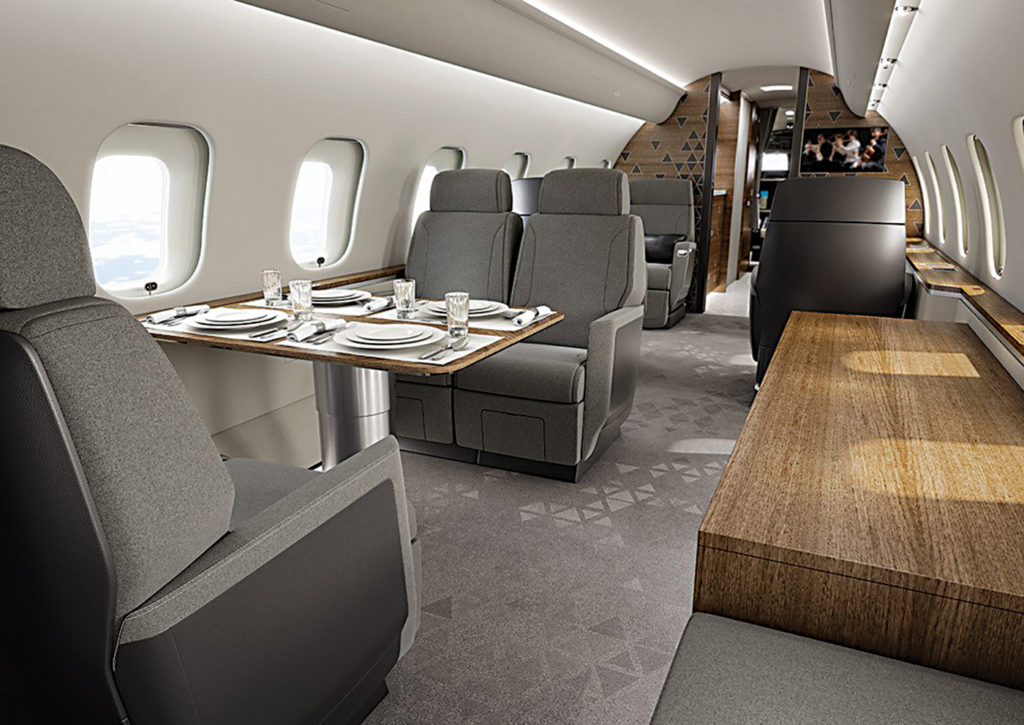
Six years ago, Bombardier and Rolls-Royce secretly began to discuss a new turbofan for the Global business jets based on technology drawn from the successful BR700 engine family and the Advance2 technology development engine program. An important requirement was that the Pearl 15 could fit inside a BR710 engine cowling, to retain the existing drag-reducing fuselage to nacelle integration of the Global aircraft.
The Pearl 15, certified by the European Aviation Safety Agency in February, is billed as being lighter, more powerful and more efficient than previous Rolls-Royce engine families.
Drawing from the Advance2 technology demonstrator program, the Pearl 15 combines proven attributes from the BR700 engine with a completely new core, featuring a 10-stage HP compressor with six titanium blisked stages, and advanced materials to achieve higher temperatures and record-level pressure ratios.
A new two-stage HP turbine engineered especially for the Pearl 15 provides enhanced aerodynamics and blade cooling. High temperature materials were used to develop an enhanced three-stage LP turbine, enabling higher fan power for increased thrust.
The Pearl family will also benefit from a new generation engine vibration health monitoring system that utilizes big data and cloud-based analytics to improve engine availability.
Pearls in Wichita
In late 2017, the first Rolls-Royce Pearl 15 engines were shipped from the company’s factory in Dahlewitz, Germany, to the Bombardier Flight Test Center in Wichita, Kan. The new engines were installed on Global 6500 FTV1 in BR710 nacelles and ground-run on Jan. 3, 2018, for the first time.
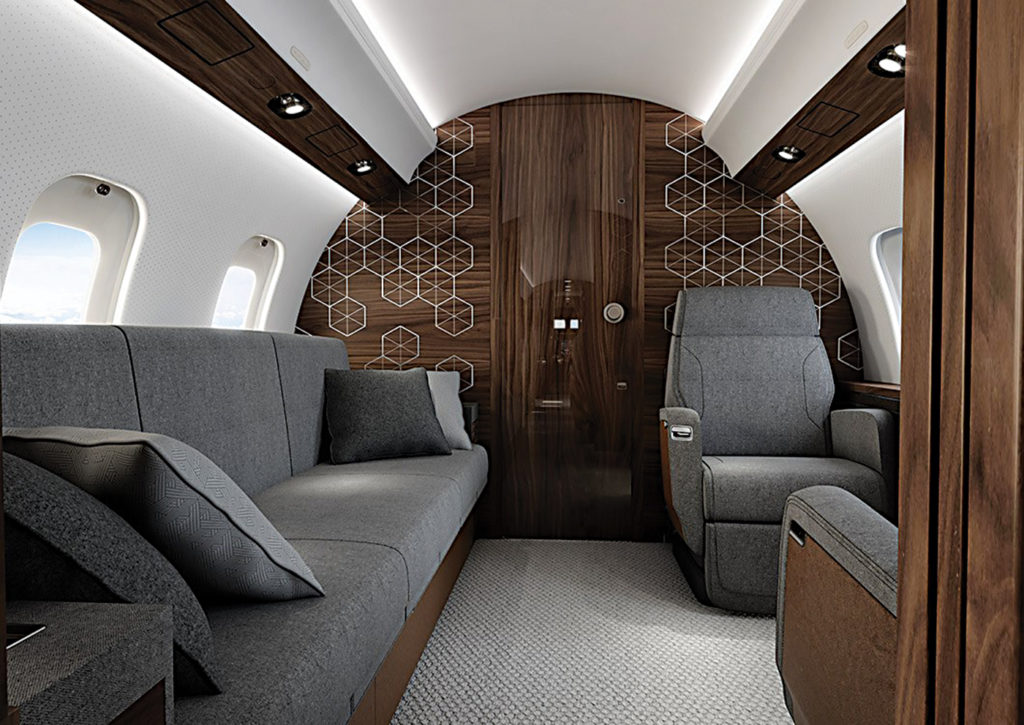
After comprehensive testing, the Canadian-registered Global 6500 FTV1 made its first flight under Pearl 15 power on Jan. 31, 2018. The flight lasted three hours and two minutes, and reached an altitude of 41,000 feet.
The aircraft was flown by Bombardier test pilots Dave Marten and Des Brophy, who were accompanied by flight test engineers Andrew Zachar from Bombardier and Bastian Hermann from Rolls-Royce.
The second flight test vehicle (FTV2), based on a Global 5000 platform, is being modified incrementally to support the flight test and certification program.
Better Performance
The Global 5500 and Global 6500 aircraft will have class-leading ranges of 5,700 and 6,600 nautical miles, respectively, and a top speed of Mach 0.90.
This means the Global 5500 can now connect Sao Paulo and Paris, or Moscow and Los Angeles; and the Global 6500 can connect Hong Kong and London, or Toluca, Mexico, with Madrid.
Performance improvements have resulted in a combination of increased thrust and lower fuel burn, as well as a re-profiling of the rear portion of the aircraft’s supercritical wing to optimize aerodynamic performance.
The engine improvements deliver lower operating costs, and will allow the aircraft to increase its range to 1,300 nautical miles when operating out of hot-weather and high-altitude airports.
More Comfort
In the cockpit, the Bombardier Vision flight deck will feature the first true combined vision system (CVS) in business aviation–the only system to seamlessly merge enhanced and synthetic images in a single view.
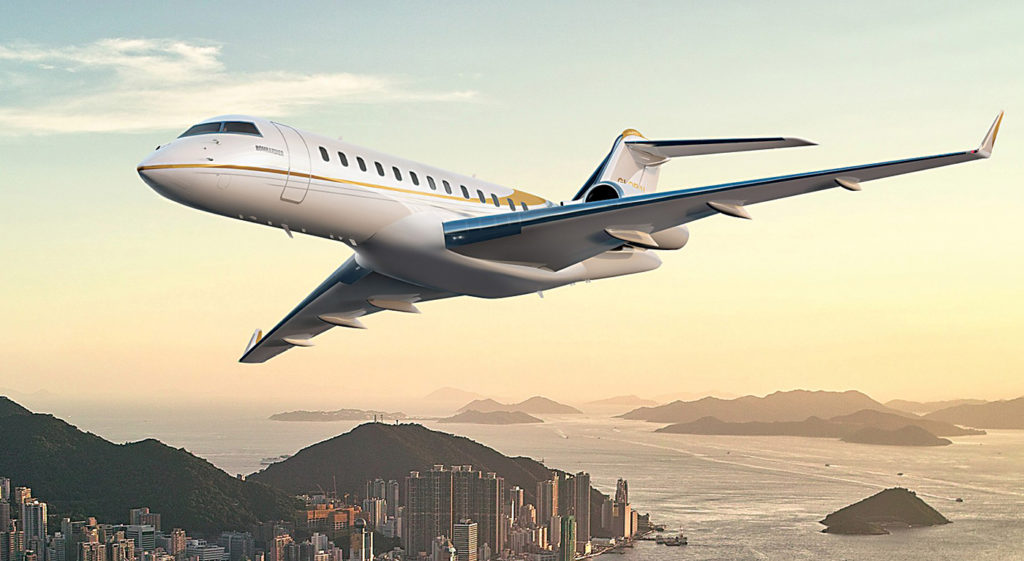
Customers for the Global 5500 and Global 6500 will receive a cabin with some of the high-end interiors developed for the flagship Global 7500 aircraft.
This includes Bombardier’s new Nuage seat, “a revolutionary design and the first new seat architecture in business aviation in three decades,” according to Bombardier.
Creature comforts are extremely important on 10-hour plus flights in a business aircraft.
The Nuage seat’s patented tilt link system provides a deep recline position for extraordinary comfort and support. The seat features a unique floating base with a first-ever fully trackless footprint and permanently centred swivel axis, and a tilting headrest for neck support.
Today’s business aircraft passenger experience must also include in-flight connectivity. To this end, in 2016, Bombardier became the first aircraft manufacturer to offer the revolutionary Ka-band high-speed data system in a business aircraft cabin.
The OEM is also first to market with Gogo Business Aviation’s 4G next-generation air-to-ground (ATG) Internet system, which uses the Gogo Biz 4G ground network of more than 250 towers to provide reliable connectivity over the continental U.S. and large parts of Canada and Alaska.
Global 7500
The success of the Global family was built on the Rolls-Royce BR-710, but Bombardier took a different path in 2010 when it selected the new 18,650-pound-thrust (83kN) GE Passport turbofan for the ultra-long-range Global 7000 and Global 8000 business jets.
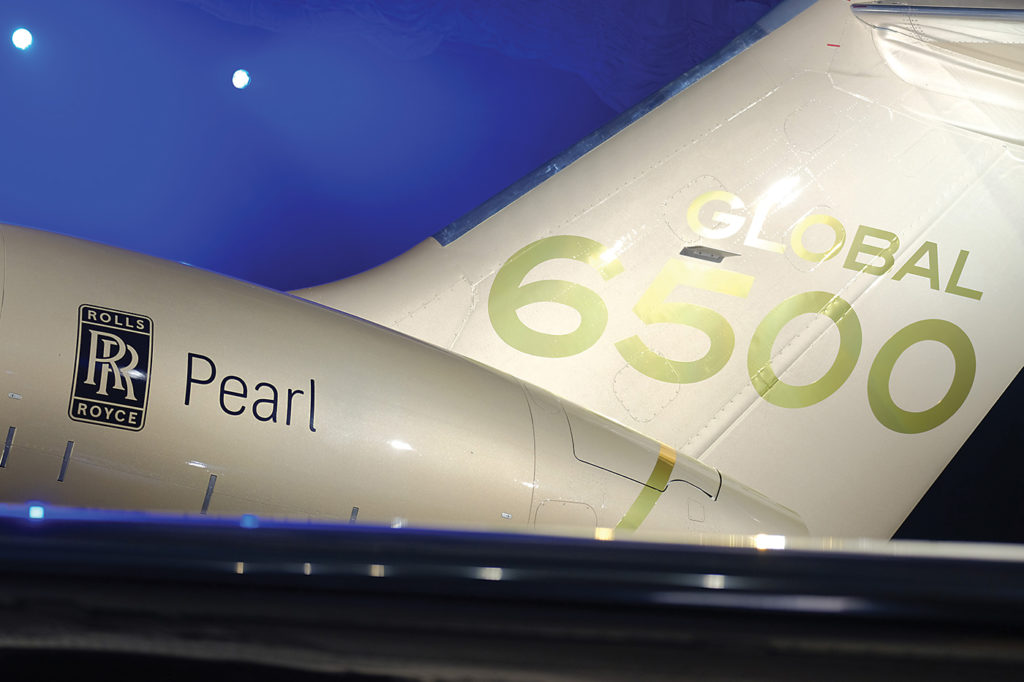
Bombardier’s (Canadair’s) commercial relationship with GE began in 1981 with the Challenger CL-601, powered by the CF34-1A turbofan. The CF34 has since powered every member of the Challenger 600 family (601, 604, 605 and 650) and Bombardier CRJ family (CRJ100, CRJ200, CRJ700, CRJ900 and CRJ1000).
The 14,000 to 20,000 pound-thrust Passport is based on GE’s Leap engine and is designed to replace the CF34 engine family.
The Global 7000 is 111 feet long, has a 104-foot wingspan, and attains a top speed of Mach 0.925.
In May 2018, Bombardier changed the aircraft’s name from the Global 7000 to the Global 7500, to reflect an increase in maximum range capability from 7,400 nautical miles to 7,700 nautical miles, confirmed during testing.
In the game of aviation one-upmanship, Bombardier can now claim the larger Global 7500 flies further than the Gulfstream G650ER, which has a maximum range of 7,500 nautical miles.

